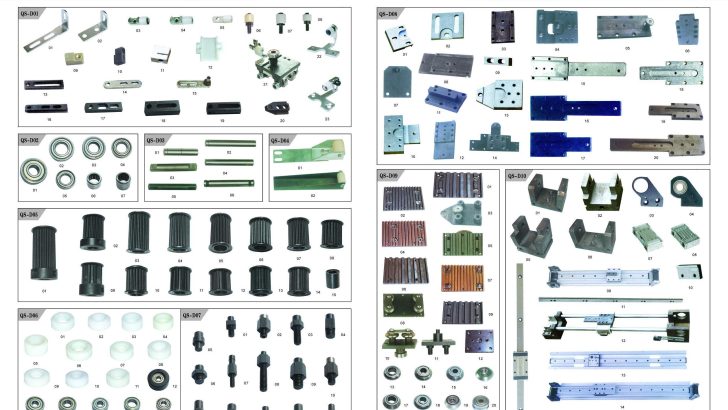Computer embroidery machines are essential tools for anyone involved in textile arts, from hobbyists to professional seamstresses. These machines allow for intricate and precise stitching that would be nearly impossible to achieve by hand. However, like any complex piece of equipment, they require regular maintenance and occasional replacement of parts to ensure optimal performance. Understanding the essential spare parts for a computer embroidery machine is crucial for maintaining its efficiency and longevity. This article explores the key components that every user should know about to keep their embroidery machine running smoothly.
The Importance of Spare Parts in Computer Embroidery Machines
A computer embroidery machine consists of several interdependent parts, each playing a vital role in the overall function of the device. When one component fails, it can disrupt the entire process, leading to frustration and potentially costly repairs. By having access to the right spare parts, users can quickly address issues and prevent further damage. Common problems such as thread breakage, needle misalignment, or bobbin malfunctions can often be resolved with simple replacements, saving time and money in the long run.
Key Spare Parts Every User Should Know
-
Needles – Needles are one of the most frequently replaced parts in an embroidery machine. They come in various sizes and types, each suited for different fabrics and stitch patterns. A dull or damaged needle can cause skipped stitches, puckering, or even damage to the fabric. Regularly replacing needles ensures consistent quality in embroidery projects.
-
Bobbin Cases – The bobbin case holds the lower thread and is responsible for feeding it evenly during the stitching process. Over time, these cases can wear out or become misaligned, leading to uneven tension and poor stitch quality. Keeping a few spare bobbin cases on hand can help maintain smooth operation.
-
Tension Discs – Tension discs regulate the amount of thread pulled from the upper spool. If these discs become worn or dirty, they can affect the balance between the top and bottom threads, resulting in uneven stitches. Cleaning or replacing tension discs is a simple yet effective way to improve the performance of the machine.
-
Thread Guides – Thread guides direct the upper thread through the machine, ensuring it reaches the needle at the correct angle. If these guides become bent or broken, the thread may not feed properly, causing tangles or breaks. Replacing damaged thread guides can restore proper thread flow and reduce the risk of errors.
-
Spools and Spindle – The spool holder and spindle are responsible for holding and feeding the upper thread. A faulty spindle can lead to inconsistent thread tension, while a worn spool may cause the thread to unravel. Ensuring these components are in good condition is essential for smooth operation.
-
Stitch Plate – The stitch plate sits beneath the needle and helps guide the fabric as it moves through the machine. It can become worn or damaged over time, affecting the accuracy of the stitching. Replacing a damaged stitch plate can improve the precision of the embroidery and protect the fabric from unnecessary stress.
-
Foot Pedal and Control Panel – The foot pedal allows users to control the speed of the machine, while the control panel manages the settings and functions. If either of these components fails, it can significantly impact the usability of the machine. Having spare parts for these components ensures that users can continue working without interruption.
How to Choose the Right Spare Parts
Selecting the appropriate spare parts for a computer embroidery machine requires careful consideration. Users should consult the machine’s manual to identify the exact model and specifications. Purchasing genuine or high-quality compatible parts is also important to ensure compatibility and durability. Many manufacturers offer replacement parts directly, making it easier to find the right components. Additionally, online retailers and specialty stores often carry a wide range of spare parts, allowing users to compare options and prices before making a purchase.
Maintenance Tips for Longevity
In addition to replacing parts when necessary, regular maintenance is key to keeping a computer embroidery machine in top condition. This includes cleaning the machine after each use, lubricating moving parts, and inspecting components for signs of wear. By following a consistent maintenance routine, users can extend the life of their machine and reduce the frequency of part replacements.
Conclusion
Computer embroidery machines are powerful tools that require attention to detail and proper care. Understanding the essential spare parts and knowing how to maintain them can make a significant difference in the quality and efficiency of sewing projects. Whether you’re a seasoned professional or a beginner, investing in the right components and practicing regular maintenance will ensure that your machine continues to perform at its best for years to come.
